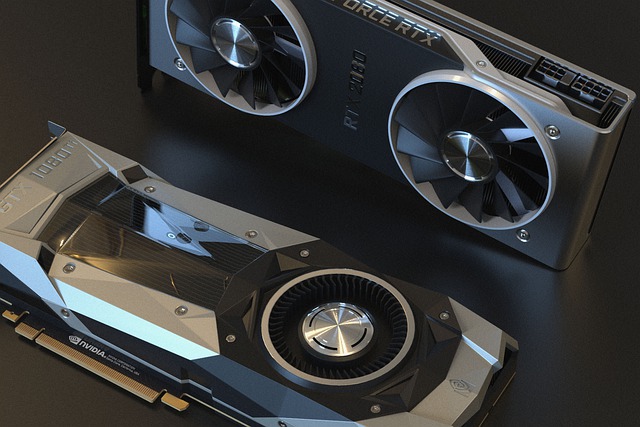If you want to play games at max settings or watch movies in 4K resolution, then you’ll need a powerful GPU. The problem is that overclocking your graphics card isn’t always straightforward. In fact, some GPUs don’t even support overclocking.
Overclocking your graphics card involves changing its clock speed. This means increasing the frequency of the processor (the part of the computer that processes data). As a result, the performance of your graphics card increases.
What You Need to Overclock
Overclocking is one of those things where everyone seems to have their own method, and some people swear by it while others think it’s complete nonsense. However, the truth lies somewhere in the middle. While it’s true that you won’t overclock anything without a good cooling solution, you do need a few basic tools to make sure you’re getting the most performance out of your hardware.
The first thing you want to look at is how much room your current cooler has to breathe. A lot of cards have fans that are pretty small, and if you cram too many components into a tight space, you could end up overheating. This isn’t just a problem with ITX builds; we’ve seen plenty of cases where enthusiasts have had trouble getting enough airflow around larger GPUs even in full-sized ATX cases.
Of course, if you’re building a system with a high-end GPU server, you’re probably going to need something bigger anyway. But even if you’re looking at mid-range parts, you still want to make sure that you have enough airflow.
Next, check out what type of fan your motherboard supports. Some motherboards support PWM fans, meaning that you can control the speed of the fan manually. Others use a fixed RPM setting, which might not be ideal depending on your needs.
If your motherboard doesn’t support PWM fans, you can always add a third-party fan controller. These devices usually plug directly into the motherboard and allow you to adjust the speed of the fan as needed. They’re cheap, easy to install, and can save you money in the long run.
Finally, you’ll want to check out the power requirements of each component. Most cards require anywhere from 300W to 600W of power, so you’ll want to make sure that your PSU can handle that load. In addition, you’ll want to make certain that your motherboard can provide adequate power to everything else.
Step 1: Benchmark Your Stock Settings
Before you start, it’s best to do some testing to make sure your hardware is performing optimally. A simple way to check is to use GPU Bench, which allows you to benchmark your system while playing games. If you’re looking to optimize your PC for gaming, we recommend starting here.
You’ll see a bunch of graphs showing your system’s CPU and memory usage, along with your FPS averages. There are also options to change the resolution and quality setting, as well as the number of threads used.
If you’re ready to start tweaking, hit “Start.” You’ll see a list of presets, each labeled with a name like “Ultra,” “High,” or “Low.” Choose one that gives you a solid framerate, and keep scrolling down to find the settings.
Step 2: Increase Your Core Clock and Re-Benchmark
Ready to push your PC even further? We’ve got another step for you today. Let’s say you just bought yourself a brand-new CPU cooler, and you want to see how much performance you can squeeze out of it.
You might already know that Intel CPUs are limited to turbo frequencies of 3.4GHz, but what you probably don’t realize is that AMD CPUs are similarly restricted. In fact, AMD CPUs are capped at 4.2GHz. If you’re wondering why that matters, we’ll explain later. For now, let’s focus on increasing your core clock speed.
- Open MSI Afterburner (if you haven’t done so already).
- Then, open the Power Limits tab.
- Click the Power Limit slider, and slide it all the way to the left.
- Set the Temperature Limit slider to something around 80°C.
- Click the Apply button and close Afterburner.
- Now, go ahead and rerun Superposition Benchmark.
Step 3: Increase Your Voltage and Memory Clock (Optional)
If your temperatures are still within safe ranges, you may be able to push your card a bit further by increasing the voltage.
This can allow for higher stable clock speeds, depending on your graphics card. To do this, open the Afterburner settings and, under the general tab, check the unlock voltage control box and unlock voltage monitoring box. Set the voltage control drop down to a third party, and click ok.
A new slider should show in the afterburner main window: voltage. If this slider measures voltage as milli volts, then you can increase your voltage supplied to the card by moving the slider left. You’ll want to keep an eye on your temps though. If your temperature starts getting too high, you could damage your card. To avoid such a situation you could use public cloud solutions.
Step 4: Run a Final Stress Test and Play Some Games
If you’re looking for something different from the benchmarks we’ve already covered, here’s another option. Heaven isn’t just for gaming—it’s also great for testing overclocking setups. We tested the performance of our reference GTX 1080 Ti Founders Edition against three custom cards from EVGA, MSI, and XFX.
We ran each card in Heaven for about four hours straight to see how well it could handle continuous load times. Here are some tips for running a long stress test like this:
- Make sure you have plenty of room around your PC case fans.
- Keep your CPU cool and your GPU temperature low.
- Don’t overclock your GPU. If you do, don’t forget to turn off your power supply fan while you’re playing games.
- Monitor your temps throughout the process. If anything starts getting too hot, shut down the game and let your computer cool off.
- Set up alerts for overheating and underclocking.
- Check your PSU’s warranty period. Most warranties cover damage caused by overloading or short-circuiting, but there aren’t many guarantees for hardware failure.
Results and Final Words
I tested the GTX 1080 Ti and Radeon RX 580 against each other in six games, including Battlefield 1, Doom, Forza Horizon 4, Gears of War 4, Metro Last Light Redux, and Wolfenstein II: The New Colossus. Both cards performed well across the board, though there were some minor differences in what worked best depending on the game.
The GTX 1080 Ti had slightly better performance in Battlefield 1 and Doom, while the RX 580 did better in Forza Horizon 4, Metro Last Light, and Wolfenstein II.
But overall, both cards performed similarly. If you’ve been following our coverage over the past few months, you know we’ve been testing out a lot of different configurations, so it makes sense that the final verdict is a little mixed.
For example, we tested the graphics card without a power supply, just like most people would buy one, and we ran into issues with stability. We also tried the reference cooler, which didn’t perform quite as well as the custom design.
Tags: GPUgraphics cardoverclockingperformance

